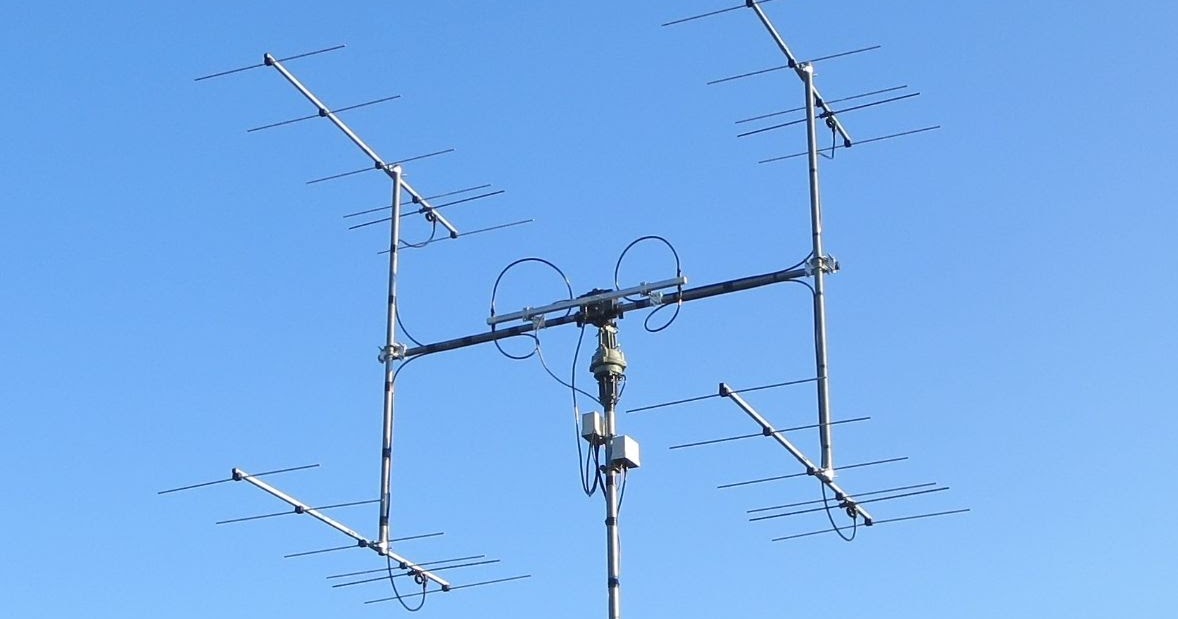Ham Radio Eme Antenna Moon Reflection
Communicating over great distances via VHF continues to fascinate many amateurs. EME (Earth-Moon-Earth) communication, also known as 'moonbounce', meteor scatter, and VHF cw DX are some of the techniques used. In the case of EME and meteor scatter, the concept is simple: use the moon or the ionized trail of a meteor as a passive reflector for VHF and UHF signals.
This is the latest addition to the high performance M2 family of weak signal antennas. As the name implies, the 432-12EME has be specifically designed as a potent yet compact EME (Moon Bounce) array. It is ideal for home and trips (DXepeditions). Its light weight and rear mount capabilities keep phasing lines short and mounting simple.
A simple but effective station is within the reach of most amateur experimenters. With the advent of very sensitive receiving preamplifiers and commercially available high-gain Yagi antennas, many VHF operators are enjoying successful weak signal contacts. With a total path length of about 500,000 miles, EME is the ultimate DX - for the time being! Weak signal VHF work is discussed in a operational way at the page.
2m EME SetupThe first test I did was to bounce some echoes off the moon just as it came up. With the amp on and set for its rated digital mode output of 900 watts on 2m (it will do 1.2 Kw in SSB mode), I heard my signals coming back from the moon for the very first time. The moon was between North America and Europe as it came up and I noticed that several stations from Europe were on 2m EME.
After a few CQ calls using JT65B (WSJT mode for 2m EME), Milos in Slovenia came back to me and I successfully completed my first EME QSO on 2m! I also worked two other stations on 2m EME from Europe – (in Germany) and (in the Ukraine).
I suspect some of these folks may have had pretty big EME stations as their signals were very strong. Here’s a snapshot of my first QSO with S52LM. WSJT EME QSO – WaterfallS52LM’s signal is the lines and dots between 0 and 200.
These are fairly strong signals by EME standards. The WSJT software’s performance on such weak signals is pretty amazing.
(The other lines on the waterfall are very weak “birdies”).Most of the bigger EME stations use an array of long boom yagi’s so I am pretty lucky to get this done with a single antenna and no elevation rotator. Here’s a picture of a more typical antenna system for EME (this is DK5SO, the station in Germany that I worked). Hello FredI made my first EME QSOs on 432 back in the dark ages (1978). I’m not currently QRV due to a divorce, but I’ll be back!

I’ve never been one of the ‘big boys’ but I’ve had a lot of fun! My last period of activity via the Moon was on 10GHz, but I’ve also been active on 2m (CW with a single yagi in the 1980s, and CW, JT44 and JT65 in the early 2000s). I was also briefly on 23cm EME in the 1980s. I’ve learnt so much from ‘playing’ EME, and made a host of good friends.My reason for writing this is that I was struck by your enthusiasm. EME is amateur radio at its best. I do hope we have a QSO ‘off the Moon’ one day.Vy 73.ChrisGW4DGU.
Hi Rich,You can make full power with the M2 Amp using about 50w in. This is well within the capacity of the IC-9100.
I have not had any overheating problems with the radio/amp combo including using JT65.A couple of suggestions on doing EME. First, get the receive setup working well. Consider using a tracking program to keep your antenna(s) on the moon. Anything that works for satellites will do the job for EME as well. Also, pay attention to the overall EME path degradation. I use a desktop gadget to monitor this. Watch hindi serials online free. You can learn more about what goes into this index and about EME propagation here –If you have feed-lines that are not short, you may need a low noise preamp close to the antenna.
This can also help to improve overall S/N performance significantly over what you radio is capable of. I think I referenced a good source for such preamps in one of my EME posts. Once you have the receive and decoding setup working, try transmit. I have found that I need a little more power than the IC-9100 generate with my single yagi setup to make contacts. This is why I got the amp.– Fred (AB1OC). Thanks Fred for the info and the informative link!

These are very good suggestions and I’ve seen them made by other EME’ers.One question that I have is that my proposed FIXED EL yagi has a 7 deg max take-off angle when positioned horizontally zero degs. Would that equate to having the best chance of delivering a ‘strongest’ signal to the moon when the moon is 7 degs above the horizon? Tracking software seems to indicate that at moonrise the moon climbs in elevation around 1-1.5 deg over a 10 minute period. So a good window for me seems to be around 5 to 10 degs in elevation where I have a bit less than 1 hour to make an EME QSO.
Ham Radio Eme Antenna Moon Reflection Today
Additionally, it doesn’t seem like one would want to try an EME QSO when the moon is directly at the horizon zero degs. Am I correct in these assumptions? 73, Rich, K3VAT.